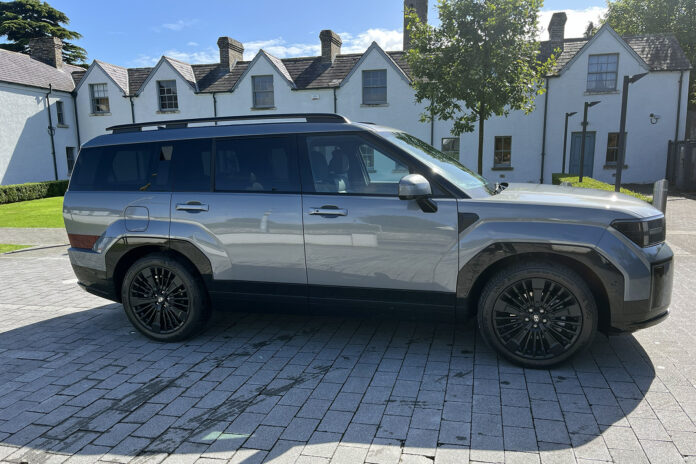
Hyundai and Seat both have a tradition of naming their cars after places. Seat tend to use Spanish locations, while Hyundai opt for names of American towns and cities located west of the Mississippi River.
The massive Santa Fe is named after the capital of New Mexico and was first introduced in 2001. We have had four more generations of the SUV since then and the 5th generation that I drove last week is truly a beast of a car.
For more than two decades, the Santa Fe has conquered the driveways of well-off Irish families, pushing aside established premium rivals. Now this new version should find a good home in a few new driveways.
It’s a new version and naturally Hyundai have made changes and improvements. Externally the car has an upright or some might say ‘boxy look’ to it and has been compared in looks to the Land Rover Discovery. The front has a very imposing stance, while the rear has a neat, wrap-around look to it.
Inside, a panoramic curved display which combines a 12.3-inch digital instrument cluster and infotainment system into one curved screen is also new. I liked the old-fashioned knob to adjust the volume of the radio.
The gear lever is now located to right of the steering column, which allows the centre console to host two wireless phone charging pads, and a pair of cupholders.
It’s so spacious, almost like a minibus. I wondered what the Santa Fe would be like if it was fitted with sliding rear doors that are used in some other large people carriers.
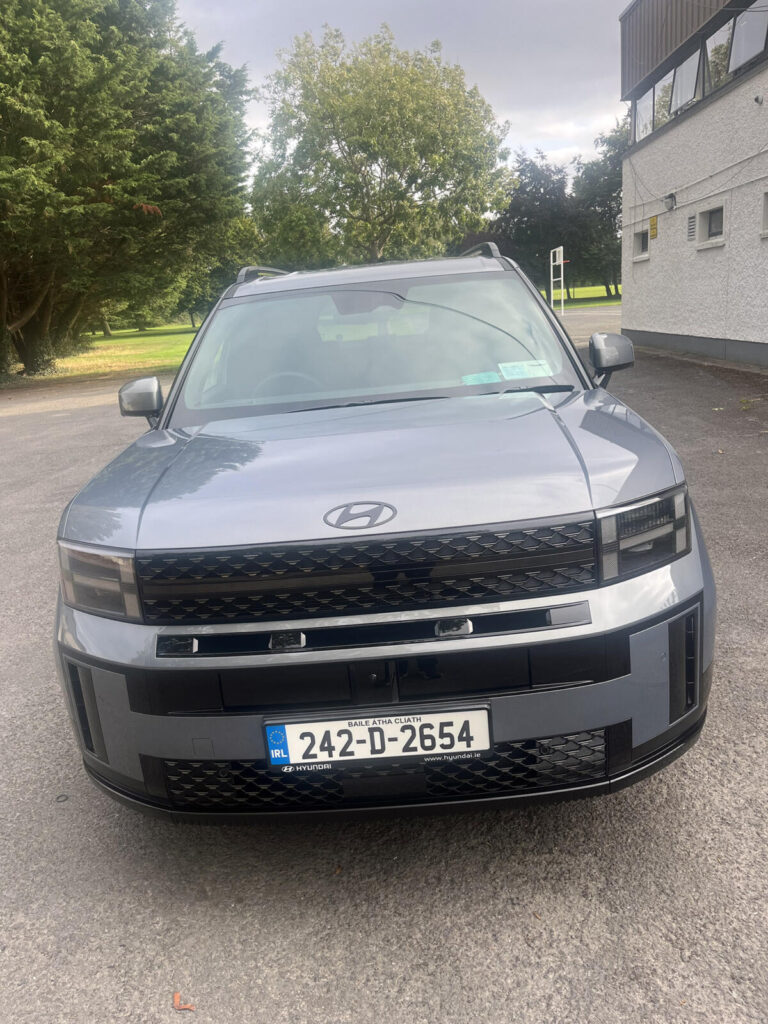
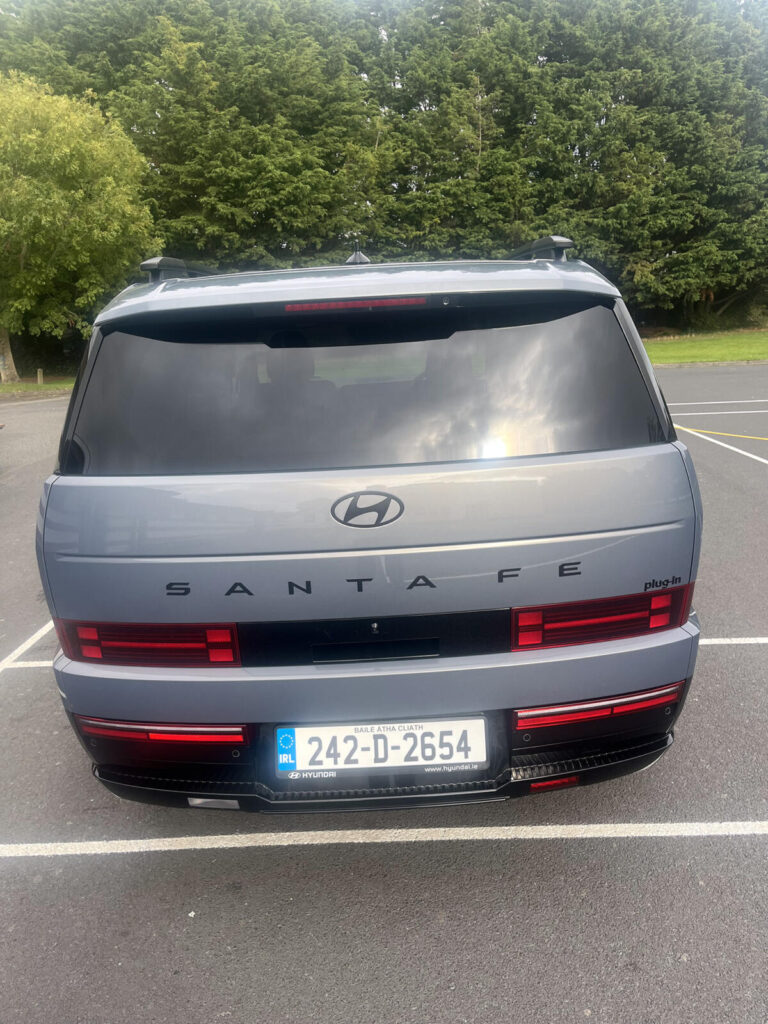
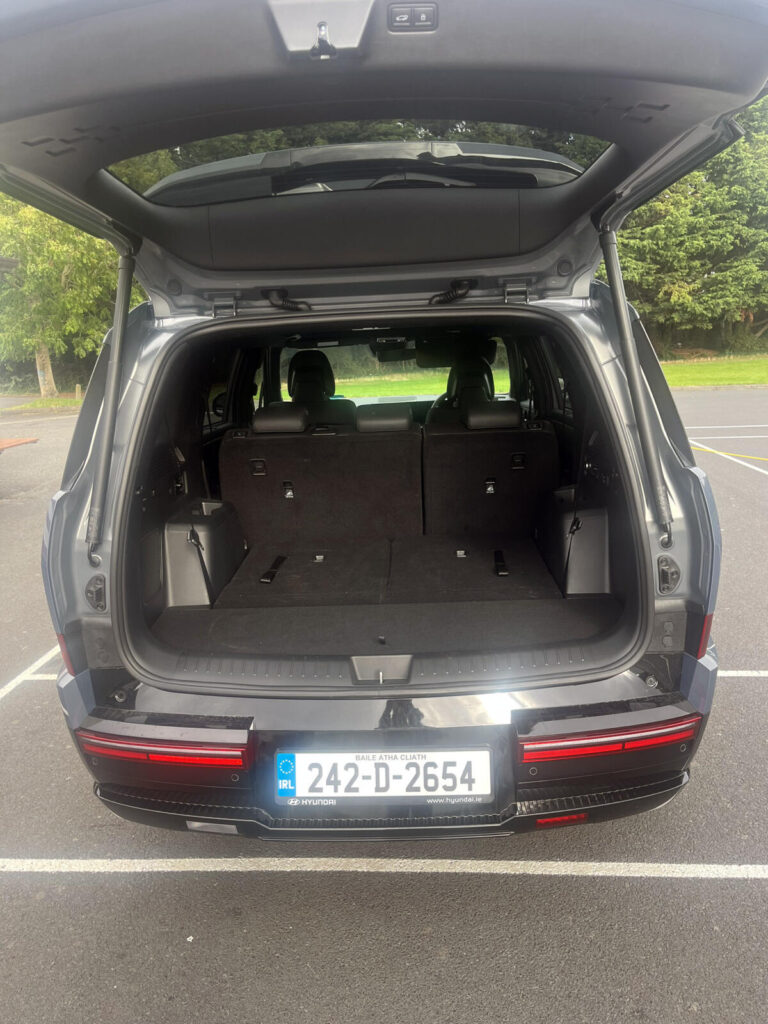
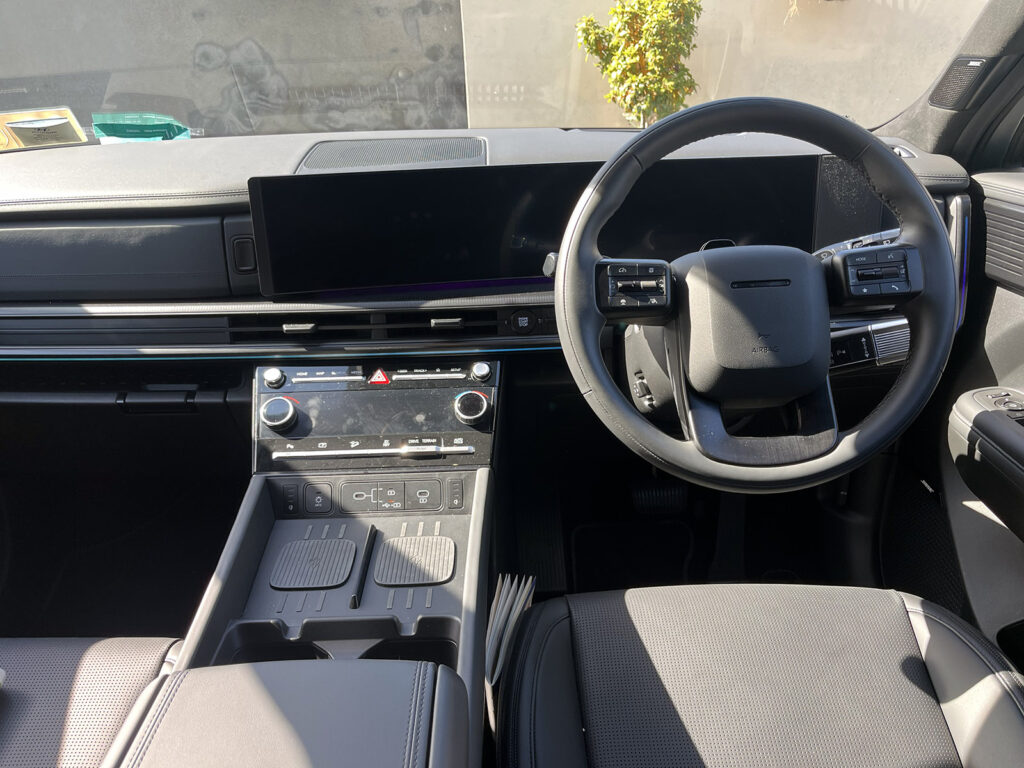
My seven-seater test car was a plug-in hybrid version, powered by a 1.6-litre petrol engine and supported by a 72kW electric motor giving 235 brake horse power.
Hyundai claim a full-electric range of 54km, not the highest around, but really to achieve those all-electric ranges takes up a lot of charging time.
Unlike many of its rivals, the third row of seats in the Santa Fe are suitable for adults and not only children. Cupholders and USB points are also provided for the third row occupants.
When only five seats are in use, the boot space is 725 litres and even with all three rows in use there is still enough boot space for shopping bags or a few small suitcases.
It’s so comfortable to drive and travel in. I liked the way when you indicate which direction you are turning, you get an image on the dash of the traffic coming up behind you. Certainly an added safety factor.
The only complaint that I have heard from some people is that there won’t be an diesel version available. Prices start at €69,995, while the Calligraphy model with a plethora of extras that I drove will cost you an extra €3K more. Road tax is €140. I think the Santa Fe is good value for such a spacious seven-seater.
If you want to go off-road there are three options: snow, mud and sand, all available with the touch of a switch on the dash. Two roof rails add to the rugged look.
The Santa Fe’s main rivals in the Irish market are expected to be Volvo’s XC90, Land Rover Discovery, Nissan X-Trail and Skoda Kodiaq. But judging by sales of Hyundai cars in recent years they should be well able to deal with the competition.
Hyundai’s Ioniq6 was voted Irish Continental Car of the Year in November 2023; I reckon their Santa Fe will definitely be in the short list this year.








